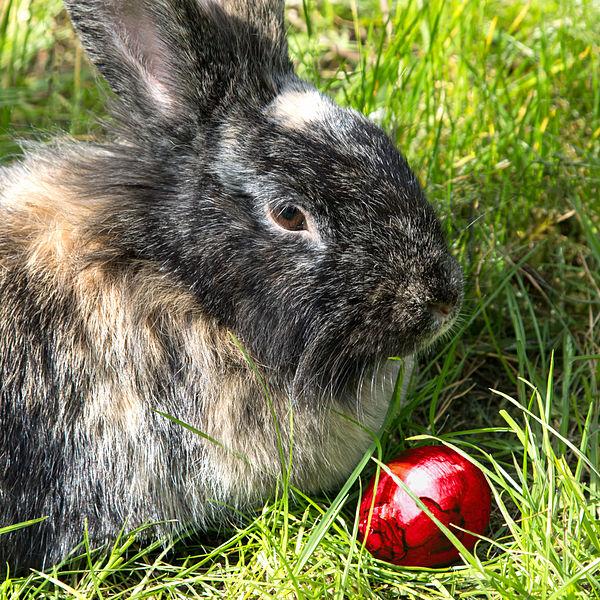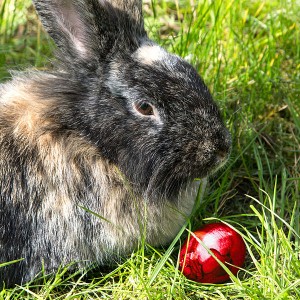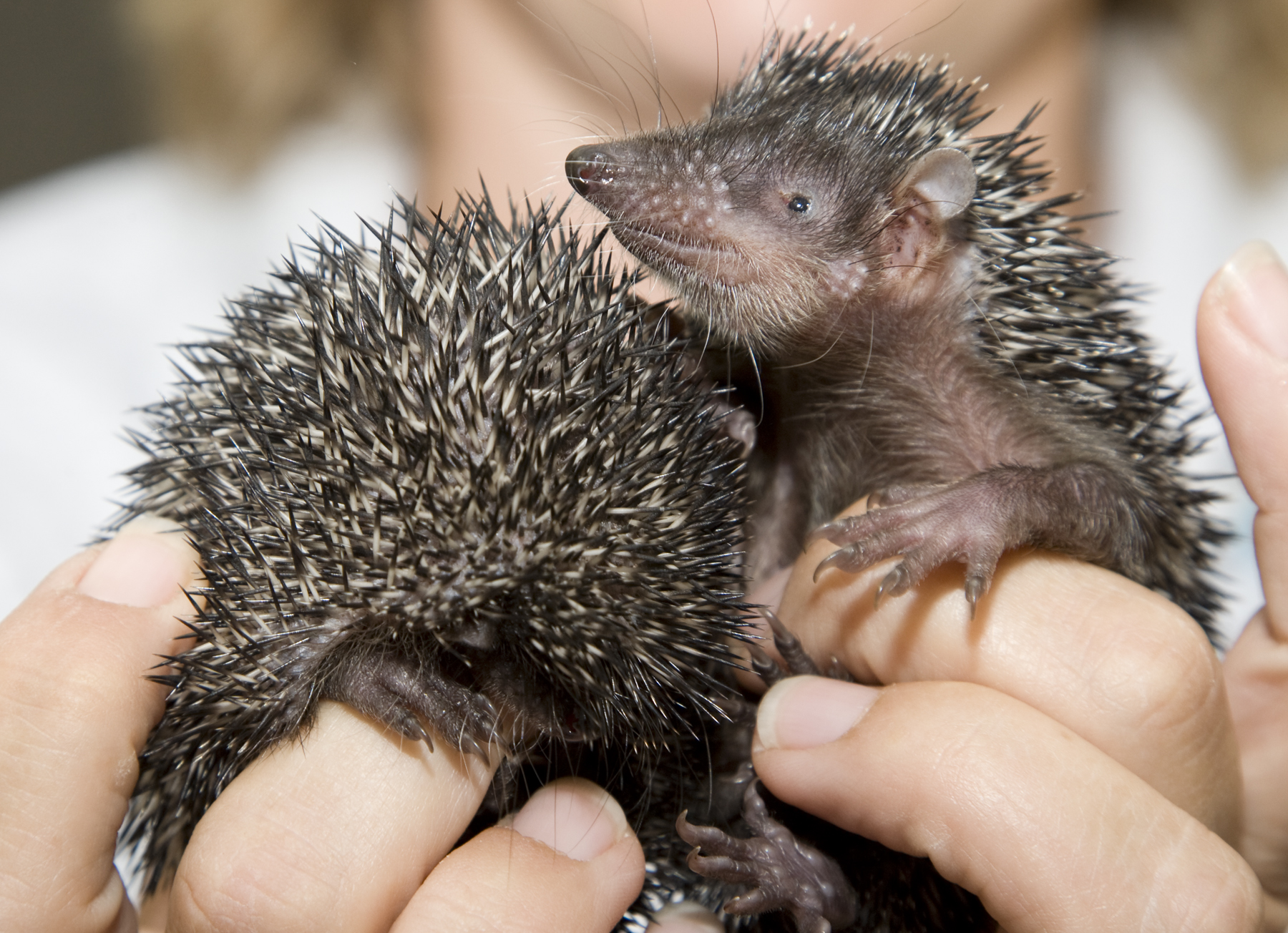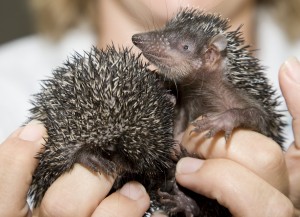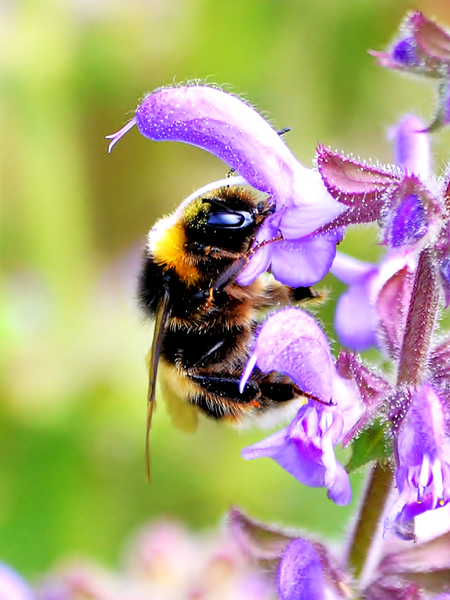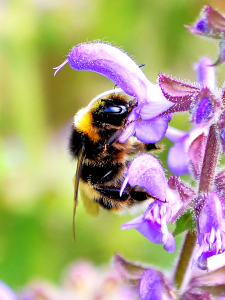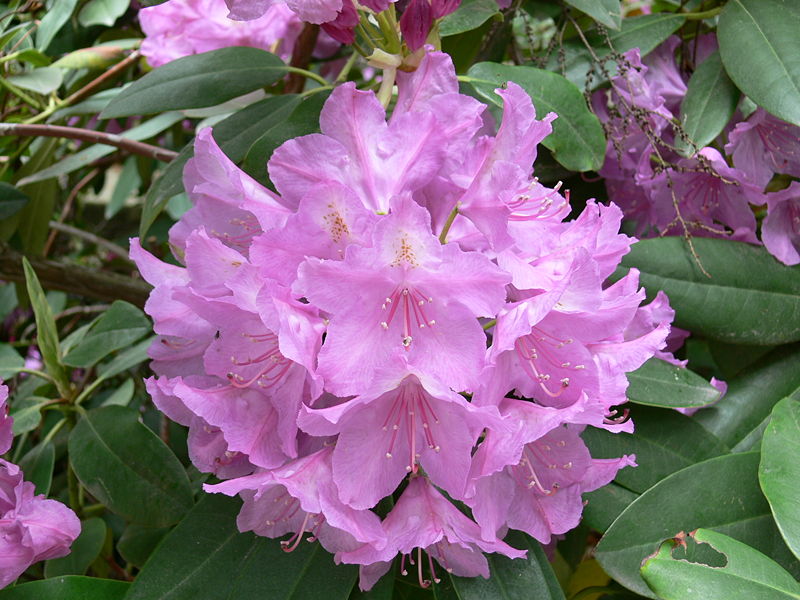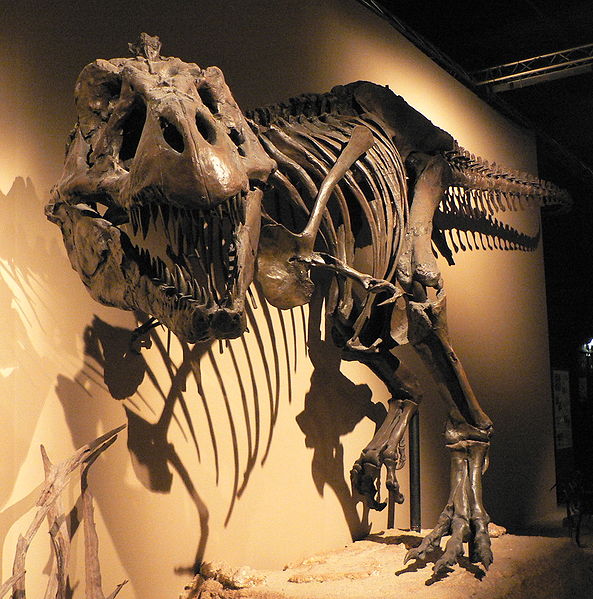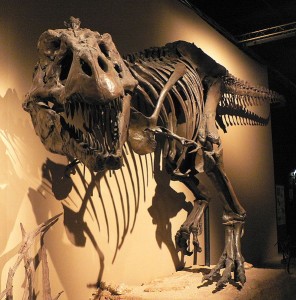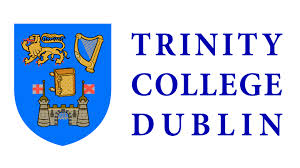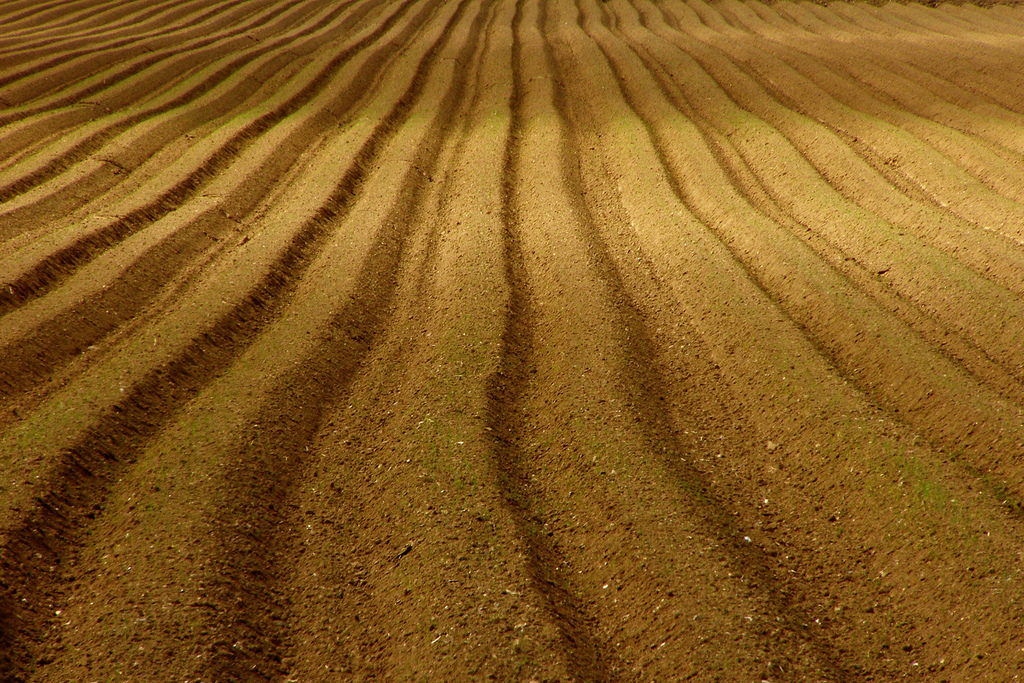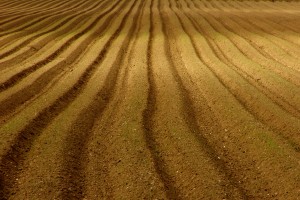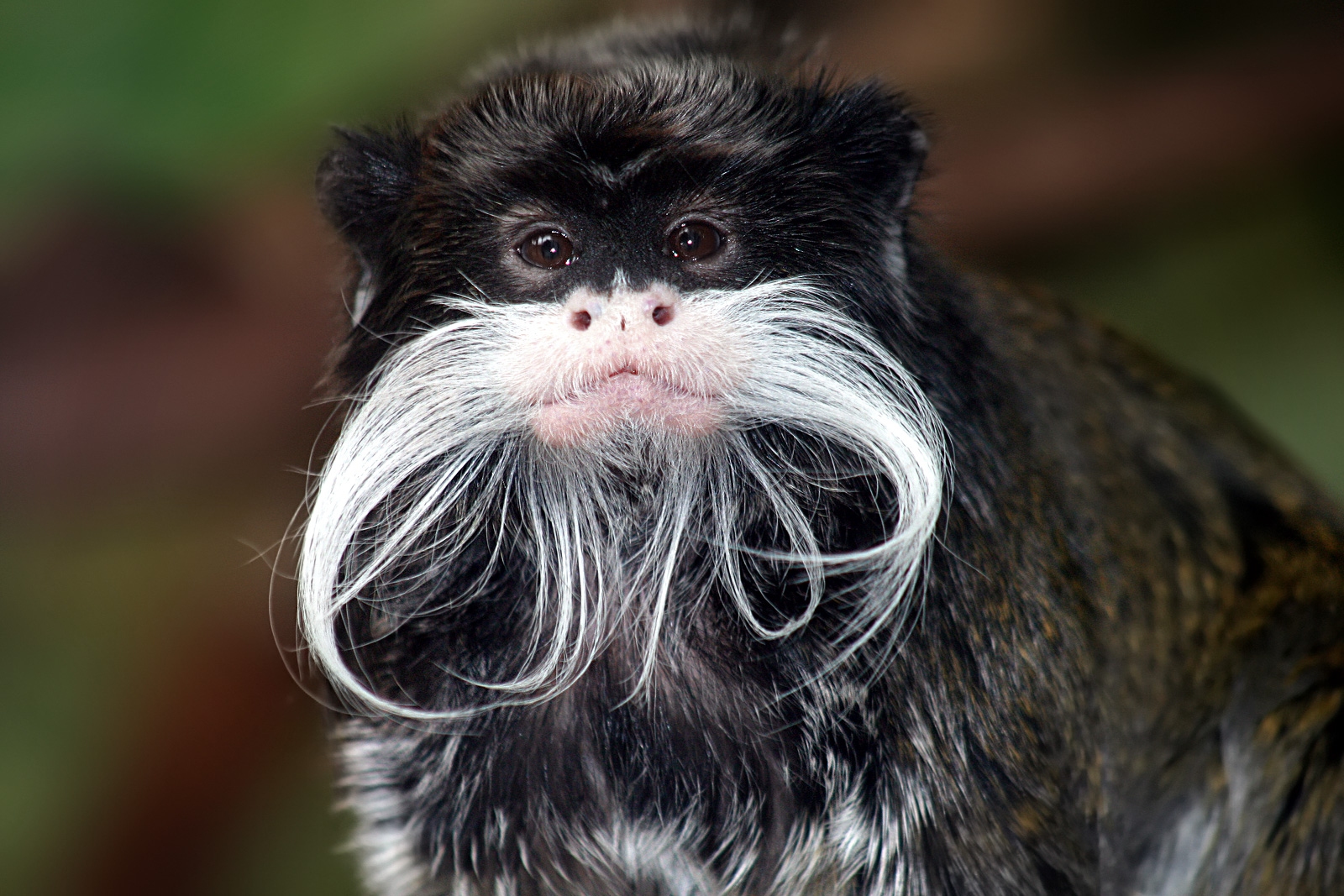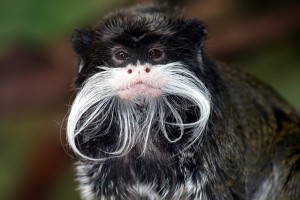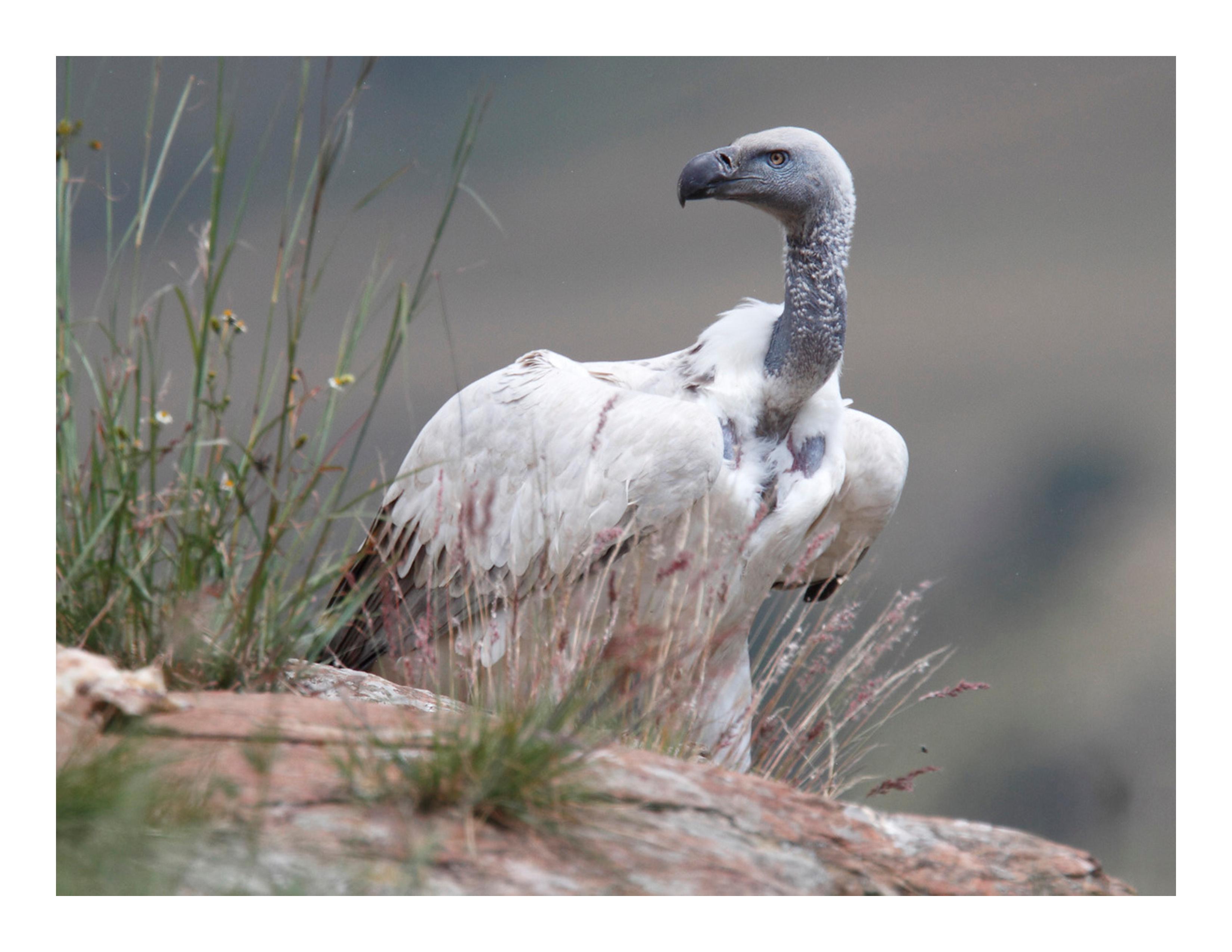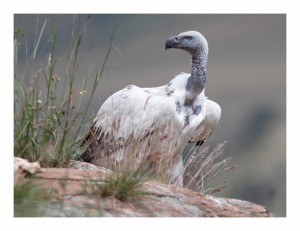The Easter Bunny apparently originated in German Lutherans’ traditions before 1682 when it was first mentioned in von Franckenau’s De ovis paschalibus. In France and Belgium however, it’s not a rabbit that hides eggs in the garden for Easter morning but flying bells coming back from Rome (they went there for their holidays since the Maundy Thursday). For many people this makes no sense at all (flying bells, come on!) but on the other hand I think that a bunny carrying coloured eggs and hiding them does not make much more sense… Continue reading “The Easter bunny’s origins are linked with climate change”
Echolocating Tenrecs
I’m going to Madagascar tomorrow.
I have all the essentials; insect repellent, tent, flat pack wooden box, bat detector, three metres of blackout curtain material… Not the most usual of packing lists admittedly but all necessary items for the trip ahead.
I’m going to study tenrecs; cute mammals which are the subject of my PhD. I’m interested in convergent evolution between tenrecs and other small mammals. So far I’ve been focusing on morphological convergence – work which has involved trips to beautiful museums and taming the dark arts of morphometrics. The primary aim of my research is to assess the evidence for morphological and ecological convergences among tenrecs and the mammals they resemble. Technically I could complete these aspects of the project without ever seeing or dealing with the live animals. But where’s the fun in that?! I’m also interested in behavioural convergences among tenrecs and other mammals, particularly reports of the abilities of some tenrecs to echolocate.
Some shrews produce echolocation calls by clicking their tongues. More recent work indicates that shrews seem to use these clicking calls primarily for navigation within their habitat rather than communication. Intriguingly, there is evidence that at least three species of tenrec; the lesser hedgehog tenrec, lowland streaked tenrec and Dobson’s shrew tenrec, can also echolocate. The animals seem to use their tongue clicks for navigation. The stridulation sounds produced by specialised spines in lowland streaked tenrecs and juvenile tail-less tenrecs have also been linked to having an echolocatory function but immobilising the spines doesn’t seem to affect the animals’ abilities to navigate by sound.
These early experiments are tantalising evidence of intriguing behavioural convergences among shrews and tenrecs. However, limitations of 1960’s acoustic technology and the ever so slight changes in standards of experimental practice (blinding animals with cement doesn’t go down so well with modern ethics boards!) mean that the study of echolocation in tenrecs is ripe for further exploration.
Hence my unusual packing list. My plan is to place wild-caught tenrecs within a box that can be converted into a maze of various layout and complexity (I’m extremely grateful to our super technician, Peter Stafford for making an adjustable maze which can be flat-packed for travel to Madagascar!).

Using a bat detector, I’m going to record the sounds produced by the animals both when they’re “at rest” just in the empty box and when faced with the task of moving through the maze to reach food at the other end. I’m going to observe and film the animals moving through the maze, both in daylight and under red-light conditions in darkness (hence the blackout curtains) and record the sounds they produce as they move. The idea is to test whether the animals’ call patterns (structure/frequency of calls) changes as they navigate their way past an obstacle in the maze. Bats are known to modulate their call frequencies when they hone in on their prey or to navigate their way past obstacles. I want to test whether there’s similar call modification in tenrecs which would provide evidence that the animals are actually using their echolocation sounds for navigation. It would be fascinating to understand more of how tenrecs use echolocation and to test whether other tenrec species can also echolocate.
It all sounds quite straightforward but I’ve experienced some of the vagaries of fieldwork in the past and I’m anticipating many more problems to come. I’ve received advice and war tales from researchers who have tried to study echolocation in shrews only to be thwarted by problems of distinguishing the animals’ calls from background sounds or the noise of the animal’s claws on a wooden base. Similarly, the tenrecs may not want to cooperate with my idea of moving from one end of the maze to another. I’m hoping that a nice juicy earthworm at the other end will act as the metaphorical carrot but there’s no way to know until we actually try it out. Furthermore, it might be difficult to distinguish sounds that say “I’m scared of being in this box” from sounds that the animals are using for navigation. Similarly, since we have neither the option nor inclination to experimentally blind or deafen the animals we won’t be able to completely exclude the possibility that the animals are using other sensory cues aside from acoustic navigation.
Even still, I’m hoping to get results which demonstrate the range of calls produced by tenrecs and which provide clues into how the animals use their acoustic behaviour to their advantage. Echolocation has involved independently in different animal lineages. Most interestingly, there is even clear evidence for convergence at the level of genetic sequences. Hopefully the data I gather over the next few weeks will add to our understanding of this fascinating story of convergence among tenrecs and other mammals.
And maybe we’ll spot a few lemurs on the way…
Author: Sive Finlay, sfinlay[at]tcd.ie, @SiveFinlay
Image Source: S. Finlay
School of Natural Sciences Postgraduate Symposium 2014: Part 4/4
On the 20th and 21st of February we had our annual School of Natural Sciences Postgraduate Symposium. Over the course of two days many of our PhD students presented their work to the School. We also had two interesting plenary talks from Dr Sophie Arnaud-Haond (Ifremer) and Dr Lesley Morrell (University of Hull). Unfortunately our third speaker, Dr Fiona Jordan (University of Bristol) had to cancel due to illness.
For those of you who are interested in exactly what we work on here at EcoEvo@TCD, here are the abstracts from the PhD student presentations. Check out the TCD website for more details!
Ruby Prickett*: Geographical, ecological and genetic characterisation of perennial biomass grasses
*Unfortunately Ruby was unable to attend but we still have her abstract
Evidence suggests that increasing CO2 concentration from fossil fuels in the atmosphere is contributing to global climate change. There is great interest in producing energy from biological sources such as willow (Salix spp.), and the grass Miscanthus. This project aims to contribute to the development of grasses of the C4 genus Miscanthus and several C3 species (Dactylis glomerata, Festuca arundinacea and Phalaris arundinacea) for use as biomass crops, particularly on marginal land. This project aims to produce maps and species distribution models for each of the four species, to identify potential areas for production and their impact on biodiversity; to collect new accessions of Dactylis and Phalaris in the Northwest Europe and Miscanthus in Asia; and to assess the genetic diversity within each species.
Rebecca Rolfe: Identification of Mechanosensitive Genes during Skeletal Development: Functional evidence associated with the Wnt Signalling Pathway
Mechanical stimulation is important for the correct formation of the skeleton. Mutant embryos that develop with an altered mechanical environment result in defects in ossification and joint formation in the limb. We tested the hypothesis that mechanical stimuli influence the regulation of genes important in skeletal development by analysing the transcriptome of muscle-less and control skeletal tissue. We found 1,132 independent genes are differentially expressed with significant enrichment of genes associated with development and differentiation and cell signalling. In particular, multiple components of the Wnt signalling pathway are affected. An investigation of the functional effects of over/ectopically expressing Wnt pathway components in the developing chick will be tested using in ovo and ex ovo electroporation. It will be used to assess whether manipulation of the Wnt pathway in the developing joint mimics the phenotype that is seen when mechanical stimulation is removed, to identify whether or not disturbing the pathway alone causes the phenotypic disturbance seen when mechanical stimulation is removed.
Anurati Saha: The Influence of Mechanical Forces for the Definition of Articular Cartilage
Articular cartilage covers the terminal ends of bones at synovial joints. It allows pain-free movement with injury or degeneration leading to diseases such as osteoarthritis. Current treatment is whole joint replacement but stem cell regenerative therapies would offer a more sustainable solution. Previous research in the lab has shown that appropriate mechanical stimulation from movement of the embryo is required for normal joint formation; joints fuse when movement is absent. My project aims to increase our knowledge of mechanical regulation of joint development in a number of respects and to explore application of such findings to achieve stable differentiation of cartilage for alternative regenerative therapies.
In the first year of my PhD, I investigated the potential of embryonic limb bud cells to form cartilage in micromass culture. This allowed me to establish a protocol to achieve chondrogenesis and revealed the stage of maximum chondrogenic potential. This part of my work will be developed to compare the response of embryonic limb bud cells and adult progenitor cells from different sources (bone marrow and joint derived) to mechanical stimuli in 3D scaffolds, potentially valuable in the refinement of protocols for regenerative therapies
Claire Shea: Mechanotransduction in Skeletal Development: From Embryonic Development to Regenerative Therapies*
*Highly commended
Why do babies kick? Why do astronauts in zero-gravity lose bone mass? What are the causes of osteoporosis and osteoarthritis? The human skeleton allows us to move, but also requires movement for its own development and maintenance. Mechanical forces impact developing tissues, making embryonic movement (kicking and stretching) necessary for normal skeletal development. Understanding how a healthy skeleton forms is also important for skeletal disease therapies which seek to generate replacement tissues by recapitulating the normal developmental pathway with cell cultures. Wnt is a cell-signalling system known to be vital to many aspects of embryonic patterning, and has been implicated in mechanotransduction by our lab. My work focuses on identification of Wnt component genes responsible for transducing mechanical signals such as tension, hydrostatic pressure, or shear into a genetic response in developing joints and bones. To characterise gene expression patterns in normal vs. mechanically-altered environments, and to assess the role of Wnt, I use genetic mutants (mouse) and gene electroporation (chick). My goal is to apply this in vivo information to in vitro efforts, where stem cells embedded in 3-D scaffolds will be treated with an optimal genetic and physical environment to form functional, stable adult bone or cartilage tissue.
Sive Finlay: Tremendous tenrecs: curious convergence and distinctive disparity*
*Best talk 1/2
Understanding patterns of variation in morphological diversity, such as convergence and disparity, remains a challenge in evolutionary biology. In particular, questions of convergence and the predictability of evolution are central to the long-standing debate about the relative influences of historical contingency and determinism in evolutionary processes. Theoretical models indicate that some degree of convergence is expected by chance in most phylogenies. Therefore, quantitative analysis and explicit tests of superficial patterns are essential if we are to identify and understand significant cases of evolutionary convergence. However, most quantitative methods of identifying convergence were developed using relatively few groups for which detailed morphological and ecological data were already known. I want to test the wider applicability and usefulness of such quantitative methods by applying them to a new study group.
Malagasy tenrecs appear to be both disparate from each other and convergent with other “insectivore” mammal species. I’m assessing the evidence for significant morphological disparity within tenrecs and convergences among tenrecs and other mammals using a combination of geometric morphometric techniques and phylogenetic comparative methods. Subsequently, I will establish whether there are correlations between morphologically similar species occupying convergent ecological niches.
Kevin Healy: The evolution of potent venom in snakes*
*Highly commended
The ability of a predator to capture its prey is a fundamental element of ecological interactions. Such interactions can broadly be described as following general scaling laws underpinned by factors such as predator-prey body size difference’s, or habitat complexity. Unlike many predators, the ability of snakes to subdue and capture prey is mediated not by physical size but by their highly evolved venoms. Based on general predator prey scaling predictions I explore the hypothesis that venom potency is affected by ecological factors relating to the ability to quickly subdue prey. The factors I predict to increase venom potency include large prey size and low prey metabolic rate, as they reduce the speed of the venom affects, and habitat complexity, as more complex habitats would allow prey more opportunity to escape. Understanding the general drivers of venom evolution can lead to insights into the evolution of snakes and other venomous species and point to perhaps other untapped venom derived bio-resources.
Erin Jo Tiedeken: The impacts of Rhododendron nectar toxins on Ireland’s bees: deadly meal or valuable forage?*
*Best talk 2/2
Bees provide the valuable ecosystem service of pollination while visiting flowers and collecting nectar. We are currently experiencing a “pollinator crisis,” as pollinating species decline in response to anthropogenic pressures. Moreover, bees may exhibit species-specific responses to drivers of decline.
Rhododendron ponticum is an invasive flowering shrub that causes ecological and economic damage in Ireland. R. ponticum produces floral nectar in order to attract pollinators, but paradoxically this nectar contains neurotoxins called grayanotoxins. Our study investigated the impact of grayanotoxins on three bee species; Apis mellifera, Bombus terrestris, and a solitary Andrena species. For each species we tested whether consumption of nectar grayanotoxins had an impact on (1) survival, (2) consumption rate, and (3) behavior. Our results demonstrate that bees have critically different responses to grayanotoxins. Grayanotoxins are acutely toxic to honeybees, however, bumblebees exhibited no lethal or sublethal effects. Solitary bee survival was not affected, however bees exhibited temporary neurological symptoms after eating grayanotoxins. Rhododendron reduces available forage for honeybees and some solitary bees but could provide an important food resource for certain bumblebees. Our results demonstrate that studies of pollinator decline should include multiple species and should not extrapolate to species other than those included in the study.
Image Source: Wikicommons
School of Natural Sciences Postgraduate Symposium 2014: Part 3/4
On the 20th and 21st of February we had our annual School of Natural Sciences Postgraduate Symposium. Over the course of two days many of our PhD students presented their work to the School. We also had two interesting plenary talks from Dr Sophie Arnaud-Haond (Ifremer) and Dr Lesley Morrell (University of Hull). Unfortunately our third speaker, Dr Fiona Jordan (University of Bristol) had to cancel due to illness.
For those of you who are interested in exactly what we work on here at EcoEvo@TCD, here are the abstracts from the PhD student presentations. Check out the TCD website for more details!
Brian Murphy: The biocontrol and biofertilisation potential of fungal root endophytes
Fungal infections of crops are often devastating and costly. However, not all fungal infections are detrimental, and some are beneficial. Beneficial root infections often involve symbiotic root endophytes. Benefits to plants infected with endophytic root fungi include an increase in seed yield, enhanced resistance to pathogens and improved stress tolerance. Here, we report that grain yield in cold-stressed barley can be significantly increased after inoculation with a fungal root endophyte provided that a threshold level of nutrients is provided. We also show that endophytes derived from a wild barley species may provide similar benefits for barley grown under drought stress with low nitrogen input. These results suggest that locally-derived fungal root endophytes may have potential for reducing agricultural nitrogen input whilst maintaining acceptable yield. The full potential of these organisms is still to be determined and further studies are urgently required to develop specific beneficial root– endophyte associations, or combination of them, that are tailored to particular crops for maximum impact in agriculture. Many fungal root endophytes are amenable to axenic culture, sporulate readily and can be multiplied rapidly, suggesting that they could be developed as effective crop treatments in stressed crops and may have the potential to increase crop yield provided that the environmental and partner-specific conditions are met. The discovery of previously unrealised benefits associated with these fungi holds great future promise for developing economically and ecologically viable crop
Alwynne McGeever: The quantification of tree population dynamics*
*Highly commended
This project aims to quantify how the populations of Elm and Pine have changed geographically in Europe over the last 6000 years. Achieving this involves 3 tasks; (1) collecting pollen data on these species from the European pollen database (EPD), (2) comparing the timing of events in the populations at different geographic scales using the R package Bchron and (3) a focused study on the dynamics of Scots Pine in Ireland. Task 3 has two sub-tasks; (a) investigating the native status of Scots pine in Ireland, (b) investigating the past growth of Scots pine on bog surfaces in Ireland. This work will discuss the progress so far. Data has been successfully obtained from the EPD. Probability distributions of when events in the populations occurred in Ireland, the UK and Austria have been plotted, allowing the timing and synchronicity to be compared. The growth of Scots pine on bog surfaces in Ireland in the lead up to the Pine decline was also analysed, for which there were 3 distinct phases over the last 9000 years. The principle remaining work involves plotting events for every country in Europe and extracting pollen from a core to investigate a putative native population of Scots pine in the Burren, Co. Clare.
Aidan Walsh: The identification of important areas of plant diversity in Ireland
Records of vascular plants from the island of Ireland have been collated into a single plant distribution database. Rare and threatened plant species records were identified and subsequently mapped at the tetrad (2km by 2km) scale. We examined the overlap in spatial coverage between areas designated for the protection of biodiversity in Ireland and tetrads containing rare and threatened plant species. A proportion of the locations of these species occurred in the wider countryside and will not benefit from the protection provided by designated areas. For example, 22% of tetrads with records of Flora Protection Order species occurred outside of designated areas in the Republic of Ireland. The combination of designated areas and landscape within 4km of the designated areas contained over 90% of the locations where records of rare and threatened plant species occurred. These results indicate the importance of both designated areas and the wider countryside for biodiversity conservation, and offer an opportunity for the spatial targeting of conservation actions. The project will ultimately develop a method to identify important areas of plant diversity at the tetrad and hectad (10km x 10km) scale.
Susannah Cass: Is the grass ‘greener’? Biodiversity impacts of legume-supported grasslands.
Biodiversity is of great importance for the delivery of many key ecosystem services in agriculture (Altieri and Rogé, 2010) such as pollination, weed suppression, soil conditioning and pest control. Legume crops have a long history of use in traditional agricultural systems for the ability to fix atmospheric nitrogen (Graham and Vance, 2000) but have suffered a decline due to the ready supply of cheap inorganic fertilisers over recent decades (Graham and Vance, 2003). The Legume Futures project (EU FP7) aimed to investigate the potential for promotion of wide-spread legume-supported cropping in Europe, and the potential environmental impacts of such systems. We surveyed non-crop vegetation and earthworm (Lumbrucideae) biodiversity in semi-permanent and permanent agricultural grasslands, with and without legumes, at four established field sites belonging to the Legume Futures consortium (www.legumefutures.de). We found that responses to legume-supported cropping were different for non-crop vegetation and earthworms, and were dependent on the measure of biodiversity – abundance, species richness, diversity indices etc – considered. Mixed grass-legume swards supported more even and more diverse (Shannon’s H’ Index) non-crop vegetation communities but had less obvious impacts on earthworm communities.
Danielle McLaughlin: The molecular and morphological impact of notochord manipulation on the foregut in 3D explant culture
The notochord is a vital structure of vertebrate embryos, defining the anterior-posterior axis and strongly influencing molecular patterning and morphology of adjacent tissues such as the dorsally located neural tube. Despite their close proximity, the influence of the notochord on the ventrally located foregut as it separates to form oesophagus and trachea is undetermined. Oesophageal atresia is a relatively common congenital birth defect of unknown aetiology in which irregular foregut separation results in discontinuity of the oesophagus. In a well established model of this condition, the adriamycin mouse model, structural abnormalities of the notochord, frequently referred to as branches, are a distinctive feature. These notochord branches have a clear association with the site and severity of co-existing tracheo- oesophageal malformations. Further clinical and experimental examples of developmental disruption of the notochord occurring in conjunction with gastrointestinal tract anomalies including oesophageal atresia exist. We hypothesise that the notochord contributes essentially to the outcome in oesophageal formation and we have established an in vitro technique of 3D explant culture to examine the morphological and molecular impact of physical notochord
Sarah Hearne*: Limitations of the Fossil Record in Understanding Macroecological Trends
*Unfortunately Sarah was unable to attend but we still have her abstract
“To know your future, you must know your past” (Margaret Jang)
Since the fossil record was first recognised as the history of life on earth it has been an invaluable aid to understanding the evolution and diversity of life. It has been used to help explain and understand past and present distribution of biota across the globe and has increasingly informed our understanding of how life reacts to changes whether sudden, such as asteroid impacts, or gradual, such as climate change. Yet there are a host of biases inherent in the fossil record that make interpretation difficult. Many of these biases are either unknown or ignored by many researchers despite the fact that they are significant and limit the ability of the fossil record to reveal macroecological trends. Until these biases are accepted as problematic and efforts are made to counter them, macroecological interpretations of the fossil record will be little more than speculation.
Paul Egan: Variation of nectar toxins in space, time and habitat – is there evidence for functional significance?
The presence of toxic secondary metabolites in nectar represents somewhat of an ecological paradox. Although a number of explanations have been offered which pose a functional significance of this phenomenon; empirical tests of these hypotheses remain scarce. Here we employ use of an invasive species (Rhododendron ponticum) ideally suited as a model system, and investigate expression of diterpene grayanotoxins in nectar. Through comparisons within and between the species’ native and invasive range, possible post-invasion evolution and plasticity of this trait is explored in response to a number of spatial and environmental factors. In addition, a functional basis to toxic nectar is tested through examination of two potentially opposing processes: A.) if or how toxin levels are regulated in nectar over the course of phenological development of flowers, and B.) the extent to which phenotypic correlation with other plant tissues may in fact explain expression of toxins in nectar (e.g. as due to anti-herbivore defence in phloem, leaves, flowers etc.). In general, our findings reveal some important factors which influence nectar toxicity, indicative of both independent and adaptive regulation of this trait within plants. Our current studies seek to further test this purported adaptive function, examining the simultaneous and opposing selection pressures posed by pollinators and herbivores on toxin production, and the resultant impact on plant fitness.
Image Source: Wikicommons
School of Natural Sciences Postgraduate Symposium 2014: Part2/4
On the 20th and 21st of February we had our annual School of Natural Sciences Postgraduate Symposium. Over the course of two days many of our PhD students presented their work to the School. We also had two interesting plenary talks from Dr Sophie Arnaud-Haond (Ifremer) and Dr Lesley Morrell (University of Hull). Unfortunately our third speaker, Dr Fiona Jordan (University of Bristol) had to cancel due to illness.
For those of you who are interested in exactly what we work on here at EcoEvo@TCD, here are the abstracts from the PhD student presentations. Check out the TCD website for more details!
Aoife Delaney: Eco-hydrology of humid dune slacks*
*Highly commended
Dune slacks are hollows in coastal sand dune systems where the groundwater table is close to the surface. Many dune slacks flood in winter to form temporary ponds which can last from a few weeks to several months. Humid dune slacks are an Annex I habitat (2190) and in accordance with Article 17 of the Habitats Directive they have been mapped and assessed in Ireland on the basis of their vegetation. During monitoring in 2013, Humid dune slacks (2190) were assessed as Unfavourable-Inadequate and topics for further research were identified. The extent and effect of water abstraction and wastewater from recreation facilities has not been firmly established in Ireland, and work relating biological communities to water quality or depth and duration of flooding has focussed almost entirely on vegetation up until now.
This project will assess variation in vegetation, mollusc and water beetle communities present in dune slacks in Donegal, Mayo, Kerry and on the east coast. It will also investigate the effects of land management by comparing biological communities of sites which are under different management regimes such as extensive pasture and golf courses. The hydrological functioning of dune slacks will be related to biological communities they support.
Anne Dubearness: Systematics of the genus Embelia Burm.f. (Primulacae — Myrsinoidae)*
*Highly commended
Primulaceae subfamily Myrsinoideae is a species-rich tropical group containing over 2000 species, with several taxonomically difficult genera with poorly defined limits and many novelties needing description. Within the subfamily, Embelia is a genus of climbing shrubs distributed mostly in South and South-East Asia and tropical Africa. The last monograph of this genus (made by Mez in 1902) recognised 8 subgenera and 92 species, but the total number of species is currently estimated at 140. The systematics of this group needs investigation using a modern phylogenetic approach: indeed, Embelia displays extensive morphological variation (especially regarding the position, shape, size and merosity of the inflorescences) and is only distinguished from other Myrsinoideae by a climbing habit and distichous leaves. This project aims to combine molecular and morphological data in order to investigate the systematic of Embelia at 3 levels: first of all the monophyly of the genus must be tested, then the existing subgenera must be assessed and refined in order to produce a taxonomic framework of the genus, and the final focus will be on the subgenus Euembelia Clarke, which contains more than 65 species and could certainly be split into several sections.
Thomas Guillerme: Combining living and fossil taxa into phylogenies: the missing data issue*
*Highly commended
Living species represent less than 1% of all species that have ever lived. Ignoring fossil taxa may lead to misinterpretation of macroevolutionary patterns and processes such as trends in species richness, biogeographical history or paleoecology. This fact has led to an increasing consensus among scientists that fossil taxa must be included in macroevolutionary studies. One approach, known as the otal evidence method, uses molecular data from living taxa and morphological data from both living and fossil taxa to infer phylogenies. Although this approach seems very promising, it requires a lot of data. In particular it requires morphological data from both living and fossil taxa, both of which are scarce. Therefore, this approach is likely to suffer from having lots of missing data which may affect its ability to infer correct phylogenies. Here we assess the effect of missing data on tree topologies inferred from total evidence supermatrices. Using simulations we investigate three major factors that directly affect the completeness of the morphological part of the supermatrix: (1) the proportion of living taxa with no morphological data, (2) the amount of missing data in the fossil taxa and (3) the overall number of morphological characters for all of the taxa.
Florence Hecq: Effects of scale and landscape structure on pollinator diversity and the provision of pollination services in semi natural grasslands
Over recent decades, humans have been changing the environment more rapidly than in any other period of history. Technological advances and new agricultural policies have led to a simplification of landscape structure resulting in the loss and fragmentation of habitats for flower-visiting insects which play an important ecological role as pollinators. Pollinating insects are very mobile and are influenced by the availability of flowers and nest sites over a scale of several kilometres.
In this study, we investigated the effects of the complexity of landscape structure on the diversity of four pollinating taxa and on the provision of pollination services to four plant species. Pollination data were collected in 19 semi-natural grassland sites in north midlands region of Ireland and related to the composition and configuration of surrounding landscape at two spatial scales (500m and 1km radius around sampling sites). Landscape structure was characterised by digitising each landscape feature with aerial photographs and GIS, and then ground-truthed using field-based surveys. Knowledge of these pollination/landscape scale relationships is crucial for a better understanding of pollinator diversity patterns and should be helpful for future conservation management decisions; ensuring essential levels of pollination services to wild plants are maintained.
Lindsay Hislop: Does nutrient enrichment moderate the effect of water level fluctuations on littoral communities?
Freshwater abstraction from lakes in order to support a growing human population is rapidly becoming a major global stress on lacustrine ecosystems. The consequent amplification of water level fluctuations disproportionately impact lake littoral zones, which contain the majority of their biological diversity. However, remarkably little is known about the impacts of amplified water level fluctuations on littoral assemblages and less still is known about how they interact with nutrient enrichment, one of the most pervasive and important of human disturbances on the biosphere. To address this, we established an experiment in large outdoor pond mesocosms where we quantified the effects of water level fluctuations and nutrient enrichment, both separately and together. We found that the impacts of water level fluctuations on both primary producers and benthic consumers varied significantly along the depth gradient. However, we found no interactions between nutrient enrichment and water level fluctuations. Given that the problem of amplified water level fluctuations is likely to be exacerbated considerably by predicted increases in climatic variability and enhanced water demand, our findings have profound implications for the conservation and management of global aquatic biodiversity.
Nuria Valbuena Parralejo: The impact of artificial sub-surface drainage on greenhouse gas emissions, change in soil carbon storage and nutrient losses in a grazing cattle production system in Ireland
In Ireland, over the 33% of milk is produced on a Heavy Soils farms. Heavy Soils are characterised by low permeability and often form in high rainfall areas. The combination of both can lead to waterlogging, promoting soil compaction which significantly affects the grass production. Drainage has been shown as an effective tool for improving the soil permeability. Little data is available to assess the effect of the artificial subsurface drainage of a grassland production system, on greenhouse gas emissions, change in soil carbon storage and nutrient losses. This experiment will be carried out in Teagasc Solohead Research Dairy Farm (latitude 52° 51’ N, 08° 21’ W; altitude 95 m a.s.l.). Different treatments (i) mole drain winter, (ii) mole drain summer, (iii) gravel mole and (iv) control were imposed in one site of the farm in 2011. A new experiment will be set up at a different site on the farm in summer 2014 with (i) control and (ii) gravel mole into collectors. Nitrous oxide (N2O) flux measurements, soil respiration measurements, soil total carbon and total nitrogen analysis, soil nitrogen mineralisation and net nitrification, water analysis, water table measurements and herbage production will all be perform in both sites over two years.
Adam Kane: Ontogenetic dietary partitioning in Tyrannosaurus rex*
*Highly commended
Obligate scavenging in vertebrates is a rare mode of life, one which requires very specialized morphologies and behaviours to allow the scavenger to cover enough area to find sufficient carrion. Yet, a number of studies have suggested that Tyrannosaurus rex occupied this niche with others arguing for its role as an apex predator. In this study we move away from the polarised predator-scavenger debate and argue that T. rex underwent an ontogenetic dietary shift, increasing the proportion of carrion in its diet as it aged due to both the increased availability of carrion through direct intraspecific and interspecific competition and also by exploiting resources unavailable to its smaller competitors, namely bone. We follow an energetics approach in our study to explore the effect of this previously unrealised resource on the ecology of T.rex and look at the impact of the proposed ontogenetic dietary shift.
Image Source: Wikicommons
School of Natural Sciences Postgraduate Symposium 2014: Part1/4
On the 20th and 21st of February we had our annual School of Natural Sciences Postgraduate Symposium. Over the course of two days many of our PhD students presented their work to the School. We also had two interesting plenary talks from Dr Sophie Arnaud-Haond (Ifremer) and Dr Lesley Morrell (University of Hull). Unfortunately our third speaker, Dr Fiona Jordan (University of Bristol) had to cancel due to illness.
For those of you who are interested in exactly what we work on here at EcoEvo@TCD, here are the abstracts from the PhD student presentations. Check out the TCD website for more details!
Sven Batke: High energy weather events – long term responses on forest canopies and epiphytes
High energy weather events are often expected to play a substantial role in biotic and abiotic forest dynamics and large scale diversity patterns but their contribution is hard to prove. In this study we modelled cumulative hurricane impacts at Cusuco National Park, Honduras. The model was validated on the ground and microclimate and epiphyte data were collected along the forest profile and the modelled hurricane impact gradient. During this talk preliminary data will be presented that highlights the importance of including such events in understanding current abiotic and biotic canopy dynamics.
Qiang Yang (Marvin): The multidimensionality of ecological stability: A theoretical study
Understanding the factors that determine the stability of biological communities has been a focal point of ecological research for decades. However, a challenging aspect of stability is its many components, including asymptotic stability, resilience, resistance, robustness, persistence and variability. However, in spite of its multidimensionality, the few studies that measured multiple components of ecological stability simultaneously considered them as independent and therefore analysed them separately and we know remarkably little about the mechanisms underpinning relationships among components of stability and whether there are any general features of these relationships that are common across ecosystems.
Here by simulating the dynamics of distinct food-web structures following a range of perturbations on the species abundance in these food webs in silico we quantify 1) the general relationships among different stability components, 2) the effects of the strength of perturbations (i.e. the extent of biomass loss), the structure of food webs (i.e. trophic levels and connectance) and the individual species (i.e. its trophic position, generalist/specialist, omnivorous/monophagous) on the multivariate relationships among components of ecological stability in a range of food-web structures.
Mirjam Ansorge: Infectious diseases in squirrels and their importance for human health*
*Highly commended
It is well known that emerging infectious diseases like HIV or SARS have their origin in primates, and understanding the drivers for parasite sharing between humans and our closest relatives is an important factor for human health. However, some of the worst pandemics in history came from more distantly related animals. For example, the bubonic plague, which erased almost half of Europe’s human population in the 13th century, and was transmitted by fleas living on rats. This suggests that we should also investigate diseases in species that are not closely related to humans but that do come into contact with humans regularly. Squirrels are ubiquitous and share our parks and forests. Because they are considered non-threatening and often used to human presence, they are likely to have contact with humans and therefore to transmit parasites and vectors, such as fleas. These contacts can result in serious diseases in humans such as plague. I reviewed the recorded distribution of disease carrying squirrels in the USA from 1978 to 2002 and analysed the geographic range of parasites and parasite species richness in squirrel species. I will also discuss the importance of squirrels for human health.
Sai Krishna Arojju: Association mapping of agriculturally important traits in perennial ryegrass (Lolium perenne L.)
Linking genotypes to phenotypes and explain the natural phenotypic variation in terms of simple changes in DNA sequences is a major objective in plant breeding. Association mapping is a method which can be employed to search for genotype-phenotype correlations in individuals without population structure to identify co-segregation of genetic markers and phenotypes. This project aims to conduct an association mapping study in 1800 genotypes of Lolium perenne under three experimental regimes (1) simulated grazing management, (2) silage management and (3) persistency grazing management with 2 clonal replicates in a randomised block design. Each replicates consists of 40 blocks with 50 plants. 30 populations with different background have been selected for this study (10 released varieties, 8 half-sib breeding families, 8 full-sib breeding families and 4 Irish ecotypes). Genotyping will be performed by developing genotyping by sequencing (GBS) libraries for Illumina HiSeq2000 sequencing and we will also combine this with phenotyping on a range of forage quality traits including biomass accumulation, lignocellulose determination, flowering time, tillering capacity and digestibility on Lolium accessions. Variations in candidate genes of forage quality traits will also be examined.
William Burchill: Closing the farm nitrogen balance at Solohead Research Farm
Nitrogen use efficiency on Irish dairy systems tends to be low and leads to high farm-gate N surpluses (N imports minus N exports passing though the farm gate). The objective of this study was to quantify all N flows on a white clover based system of dairy production at Solohead Research farm from January 2011 to December 2012 and to account for surplus N. The system was rotationally grazed at a stocking density of 2.35 cows ha-1 received annual fertiliser N input of 112 kg ha-1 (BNF) was quantified using two 15N isotope techniques. A 15N gas flux and static chamber method were used to quantify N2 and N2O emissions, respectively. Inputs (fertiliser N, BNF, feed and rainfall deposition) and outputs (milk and livestock sales) of N (kg ha-1) from the system were 274 and 80 respectively, with a farm-gate surplus of 194 kg ha-1 in 2011. Total measured N losses (kg ha-1) were 210 including 19, 43, 25, and 123 as N leaching, NH3, N2O and N2, respectively. The results of the present study indicate that a large proportion of Irish dairy systems N surpluses are returned to the atmosphere as environmentally benign N2 gas.
Donna Hawthorne: Fire, human and climate interactions throughout the Holocene
Significant changes in global and regional climate as well as changes in vegetation, land use, agriculture and policy, have promoted an increase in fires in the Irish landscape. To understand these changes the interrelationship between fire, climate and people will be explored. Past climatic oscillations have been studied at 8 sites throughout Ireland in an attempt to understand the current climatic changes which may mirror future patterns in climate. The landscape character and fire regime of each of these sites will be reconstructed and will seek to develop a model of risk assessment and management for future fire in the Irish landscape. The data span from the early Holocene to the present day, drawing on charcoal and pollen data, radiocarbon dating, and mineral and chemical data from lacustrine sediments. This work presents the first chronological comparison of regional fire activity across various locations throughout Ireland, and provides a base line level of data which can be drawn on in future scenarios when fire frequency is expected to increase. This work is in its third year of a four year PhD programme and preliminary discussions and results will be presented.
Louise Esmonde: Toxicity assessment of the agricultural pesticide Roundup Pro Biactive using Myriophyllum aquaticum and other test organisms.
Pesticide use in Ireland has increases over the last number of years yet its impact on the environment and in particular freshwater ecosystems is still not fully known. This study examines the toxicity of agricultural pesticides on non-target organisms with special reference to submerged macrophytes. In this study the toxicity of the herbicide Roundup Pro Biactive (active ingredient glyphosate) was examined using the plant species Myriophyllum aquaticum. Plant shoots were exposed to Roundup Pro Biactive concentrations of 0.01%, 0.1%, 1%, 5% and 10% for a period of 14 days. After the test period the response of the plant to the herbicide was measured in terms of wet weight, dry weight, shoot length, root length and root number with Relative Growth Rates (RGR) and EC50 values being calculated at each concentration. Preliminary results show a clear difference between the relative growth rates of control and test specimens. At concentration above 1% significant reductions in relative growth rates were recorded and physical deterioration of shoots was observed at concentration above 0.1%. Further studies will focus on the toxicity of five other agricultural pesticides on these same test species.
Systematic Reviews
Before I came to TCD, I spent my last six months at Lancaster University working with Dr Georgina Key on a systematic review of methods to make agricultural soils more resilient to threats like climate change, and erosion. What is a systematic review I hear you cry? Allow me to elaborate, and share some of our experiences from doing something slightly different.
A systematic review draws together and summarises the available scientific literature surrounding a particular topic or method. The Cochrane Collaboration, which produces systematic reviews in medicine and healthcare, defines such reviews as “a systematic, up-to-date summary of reliable evidence”. The aim of a systematic review is to provide the public, policy-makers and practitioners with a clear, unbiased picture of the latest, most reliable science on a certain practice, so that they can make informed decisions on how suitable that method is likely to be for them.
The goal of our systematic review was to produce a list of actions that could be used to improve the resilience of agricultural soils under pressure from a variety of threats. The first steps we took involved coming up with a list of key issues that would be important to manage agricultural soils in order to maintain sustainable food production in the future. We then took to the peer-reviewed literature, searching for experimentally tested solutions to the issues we’d identified, using a combination of journal trawls and keyword searches.
Journal trawls involved identifying relevant journals, like Soil Use and Management and Geoderma, then systematically searching all volumes of each journal for articles involving the issues we’d identified. Our keyword searches took a more targeted approach, using combinations of keywords to whittle down a selection of relevant articles. These approaches produced a large number of articles – far too many to summarise effectively in the time available – so we shortlisted them based on a number of criteria, foremost of which was ‘Has the action (e.g. non-inversion tillage) been tested using a robust, experimental design?’ We also filtered our keyword searches, carried out in ISI Web of Science, to the top 100 results, sorted by relevance.
Having eventually come up with a list of articles that tested the actions we’d identified, we set about summarising them. This was done according to a set template, using a specific style. This was initially restrictive, and difficult to adapt to – each article had to be summarised using specific vocabulary, within 200 words – but it ensured that the summaries would be understandable by people without a science background, and that the key message of the article wouldn’t be obscured by our own prejudices regarding the research.
Writing the summaries was the most time-consuming, but also one of the most rewarding, aspects of the project. By writing lots of summaries, we started to develop more of an understanding of how to write about science in a way that completely avoided jargon. This isn’t as easy as it sounds! But it is a vital skill for scientists to learn, in order to communicate their work to the public, and the people who will eventually turn it into policy. Having read lots of abstracts, those that stood out were the ones that communicated the message of the paper succinctly, in language that a non-expert could understand.
The article summaries and key messages from our short synopsis are now online– you can select an ‘action’, and read through the key messages, definitions, and all the evidence that we found and summarised for the use of that action, and its effects, in agriculture. I think there’s real value of having all this information collated together in one place, and communicated in an understandable way. Our soils synopsis is one of a number of synopses that you can browse through on the NERC Sustainable Food Knowledge Exchange Programme website.
Although it was only a short project, putting the synopsis together was a rewarding experience for both of us, particularly in terms of communication skills developed and networks joined. The synopsis that we produced is by no means the final product, and will need to be updated in the future to keep up with the amount of continual research in this area. The next step is to assess the synopsis, and its implicit recommendations, by asking experts and practitioners in the field how effective they think the research we covered would be, if it was implemented. This step should provide valuable feedback, helping to highlight any gaps in our synopsis, as well as improving future synopses.
Authors: Mike Whitfield and Georgina Key
About the authors
Mike Whitfield has a PhD in peatland carbon cycling from Lancaster University. Last year he helped to design and implement a long-term grassland biodiversity experiment in the Yorkshire Dales and worked with Georgina Key on the soil sustainability synopsis for six months, before moving to Dublin. Mike’s current postdoc at TCD focuses on modelling greenhouse gas emissions from agricultural land, with the aim of producing a map of estimated greenhouse gas emissions from soil for the whole of Ireland.
Twitter: @mgwhitfield
Georgina Key has a PhD in ecosystem service provision, specifically conservation pest control. Having completed her first postdoc at Manchester reviewing literature on maintaining soil fertility, she is currently doing an assessment of the literature in collaboration with Cambridge University and Waitrose. In the future she hopes to work with tea and coffee companies, implementing sustainable growing practices and improving rural livelihoods.
Email:georginakey[at]outlook.com
Twitter: @KeyGeorgina
Image credit: Treehouse1977 on Flickr
A brave new world of monkeying around with trees
I’ve spent the last few days writing an introduction for my first PhD paper on the practical issues of adding fossils to molecular phylogenies (full recipe here). This is my starting point: most people working in macroevolution agree that we should integrate fossils into modern phylogenetic trees. Of the many possible methods that are available, Ronquist’s total evidence method looks to be the most promising (however, some nice other ones also exist).
Recently Schrago et al. published a nice attempt to use this method on the Plathyrrini (New-World monkeys to you and me):
As a reminder, the aim of this total evidence method is to combine all of the available data: both molecular and morphological. Traditionally, analyses have treated each type of data separately; approaches which bring their own advantages and problems.
Let’s start with the molecules:
Opazo et al. published in 2006 a classical example of a molecular phylogenetics study. There are more recent, impressive phylogenetic studies (like Perelman et al. in 2011 and Springer et al. in 2012) on most of the primates and using more genetic data but I think Opazo is a better example of a traditional approach because it involves a tree with 17 taxa instead of more than 200.
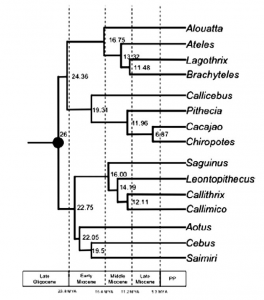
Two of the main advantages of this approach are the quantity of data involved (tens of thousands base pairs) and the methods of inferring the evolutionary history: molecular evolutionary models are easy to understand and easy to implement (each site has a finite number of states – A, C, G, T or nothing – and probabilistic models are good enough to infer the rate of changes from one state to the other). From a data perspective, another practical advantage is that, with modern NextGen sequencing, it’s really easy and fast to obtain a full genomic dataset. However, the main inconvenience from a macroevolutionary point of view is that molecular approaches don’t really take evidence from the fossil record into account. In the Opazo example, the only fossil used is Branisella, and the only useful information here is just its age (around 26 Ma) used to calibrate the time on the tree.
On the other hand, Kay et al. 2008 published an awesome study of the Platyrrhini history from a palaeontological point of view. They focused on 20 living taxa combined with 11 fossil species and using 268 morphological characters.
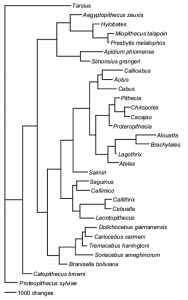
Again, there are both advantages and problems associated with this approach. Firstly, the number of characters used is pretty low; don’t get me wrong, 268 is really good for a morphological matrix, it’s just low compared to molecular data. Furthermore, the underlying evolutionary models used to build the phylogeny are hard to infer, the most common model is the Lewis 2001 Mk model where morphological characters are treated as if they “act like” molecular sites with no assumptions made about their states or rates of change (this method has been criticized but it’s still our best way to infer morphological evolution). Another solution, which is also commonly used, is to infer nothing but instead just use a maximum parsimony approach: find the tree which explains observed phenotypic evolution with the fewest number of evolutionary steps (characters changing from one state to another on a particular node within the tree). However, compared to a purely molecular approach, the advantages of Kay’s tree are clear from a macroevolutionary point of view: this tree includes full information from the morphologies of both living and fossil species!
Now hopefully you can see where I’m coming from in wanting to use the total evidence method? It’s clear from the empirical examples above that the problems associated with one approach are the advantages in the other. So let’s just combine them! And that’s what Schrago did in their work, they just mixed both data sets and re-ran the analysis (or, more precisely, they used Kay’s data set as it was but added new genomic data collected over the last seven years to Opazo’s data set). Here’s their result:
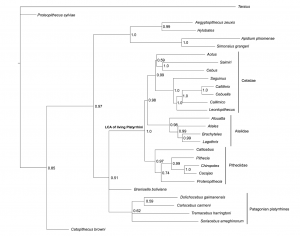
So here we have the advantage of both methods combined and this tree is far more user friendly for macroevolutionary studies; one can test evolutionary hypothesis through time using a more complete representation of the Platyrrhini evolutionary history. One major problem still remains though; the paucity of useful morphological data compared to the wealth of molecular data which is now available. Does that influence the tree’s topology somehow? Well, stay tuned, my simulations are running…
Author: Thomas Guillerme, guillert[at]tcd.ie, @TGuillerme
Photo credit: wikimedia commons
Join us!
 It’s that time of year again at EcoEvo@TCD where we start looking for people to apply for Irish Research Council fellowships to come and join us as postdocs or PhD students. These awards are open to anyone, regardless of nationality. Details can be found here(PhD funding) and here (postdoc funding).
It’s that time of year again at EcoEvo@TCD where we start looking for people to apply for Irish Research Council fellowships to come and join us as postdocs or PhD students. These awards are open to anyone, regardless of nationality. Details can be found here(PhD funding) and here (postdoc funding).
But why would you want to join us? I can talk (type?) at length about this but maybe the best people to ask are the students and postdocs we already have working here. So here are their comments instead!
Thomas Guillerme @TGuillerme
Supervisor: Natalie Cooper (Zoology)
As a French student, starting a PhD in this department was made really easy by the people working here. Not only the academic work and projects are really exciting, but also the social part of the department makes work really easy going and fun.
Deirdre McClean @deirdremclean1
Supervisor: Ian Donohue (Zoology)
I can’t recommend the zoology department enough as a place to do a PhD! This is largely due to the great diversity of projects going on and the close relationships between staff and students. Collaboration is greatly encouraged and there is so much opportunity for this through NERD club, tea breaks and pub trips! We have a really nice mix of empirical and theoretical projects meaning that we get really different and interesting perspectives on our work, which I think has been great in my development as a scientist. Being in a small department has a lot of advantages and it means I always find so much support from my supervisor, other PhD students and other staff. Because of the friendly atmosphere and the variety of research groups and backgrounds, lunchtimes, tea breaks and pub visits provide great opportunities for getting input on your work, coming up with new ideas and having debates! There is also a lot of opportunity for teaching, outreach and collaborating with other groups/departments. The campus here is beautiful and right in the centre of town so it’s a really nice place to work and socialize too!
Shane Mc Guinness @S_Mc_G
Supervisor: Anna Davies (Geography)
Without the support, funding and independence provided by IRC funding, my amibitions to study endangered species conservation and human development in Africa would not have been realised. In addition, the increasing integration of the School of Natural Sciences makes this a truly interdisciplinary environment to work in.
Karen Loxton @LoxtonKaren
Supervisor: Celia Holland (Zoology)
From fantastic supervisors to technicians who seem able to solve any problem, the Zoology Dept. has been an amazing place to study for a PhD. Staff are generous with their time and expertise and the seminars and EcoEvo group are a great way to keep up to date with research outside your own. The diversity of projects within the department ensures that pub conversations are always an opportunity to learn something new and interesting.
Kevin Healy @healyke
Supervisor: Andrew Jackson (Zoology)
So far I have really enjoyed doing my PhD in the Zoology department, mostly this is due to the fact that we get the opportunity to work on loads of cool collaboration projects (right now I’m working on a T.rex paper due to a bet in the pub on who could have a dinosaur paper first) but also because there is a very relaxed social vibe to the department as well. I think my development as a scientist over the last two years is also really down to the amount of support from not just my supervisor but all the other members of staff, whether its from our NERD club meetings, going to conferences or just a lively debate at lunch. It also helps that the department is right in the middle of Dublin so there’s plenty of pubs to continue work after 5!
Sive Finlay @SiveFinlay
Supervisor: Natalie Cooper (Zoology)
The Zoology Department is a lovely home for a PhD student. There is a very relaxed, friendly atmosphere with plenty of opportunities to mix with and learn from staff, postdocs and fellow students. We’re a relatively small department but that is definitely to our advantage because you get to know people from diverse research backgrounds and you’re not lost in the anonymity of being yet another student in a large research lab. In the past few years there’s been increased collaboration and integration across the School of Natural Sciences through our NERD club meetings, postdoc talks, weekly seminars from invited speakers and via the EcoEvo blog, all of which are great for getting out of the bubble of being stuck in your own project. There are also plenty of opportunities to get involved in teaching, collaborative projects, fun outreach events and of course a healthy amount of socialising… What’s more, Trinity is a great university with a beautiful campus in the centre of the city – not a bad place to work!
Seán Kelly @seankelly999
Supervisors: Nicola Marples and Dave Kelly (Zoology)
The Zoology Department and the School of Natural Sciences are full of friendly and welcoming students and staff from a great variety of backgrounds. I never fail to find support or advice on my PhD project when it’s needed, whether from my supervisors, other staff or students. The diversity of expertise within the department is a real asset; one that is readily available to you. Integration within and between the various departments is ever increasing and collaboration is greatly encouraged. Lunchtime conversations often turn into lively debates and sometimes lead to new collaborative projects. There’s ample opportunity for teaching experience, group learning and social outreach, as well as socialising, of course.
Sarah Hearne @SarahVHearne
Supervisor: Ian Donohue (Zoology)
I was nervous moving to a new university to study a new field of biology, but I shouldn’t have been. The department is incredibly friendly and welcoming and there is a great spirit of collaboration. This isn’t a place to hide away for three years, it’s a place where discussions are had or ideas spawned over a pint in the pub or during a lunch break. People share their successes and commiserate over failures. Some great science is done as well!
Adam Kane @P1zPalu
Supervisor: Andrew Jackson (Zoology)
The Zoology department has a great group of scientists who are interested in each other’s research which makes for excellent collaborative opportunities. The best advertisement I can give for it is that I don’t dread getting out of bed on a Monday morning.
Katherine Webster
Supervisor: Ian Donohue (Zoology)
Being part of the dynamic and interactive EcoEvo group in the School of Natural Sciences has greatly enhanced my experience at Trinity as a postdoc. From the students to faculty, you gain valuable feedback into your own research while learning about new ideas that expand your own perspectives. Being in Dublin and walking the hallowed grounds of Trinity College certainly adds to the experience!
If you’re interested and have a member of staff with appropriate research interests in mind, please get in touch! Contacts and research profiles of staff can be found here. Note that, unfortunately, the application success rate is fairly low and the applications themselves take a bit of effort to fill in for both the applicant and the academic who supports the application. Because of this we won’t be able to support every person that contacts us. But we promise to be realistic about your chances of getting funding. This is judged on your CV, the project, and the fit of the project to the chosen supervisor. The call opens in November and the deadline is January.
Author: Natalie Cooper, ncooper[at]tcd.ie, @nhcooper123
Image: Wikimedia commons
Cape Vulture Conservation
Conservationists try their best to stop endangered species sliding to extinction and keep the habitats of these life forms intact. Captive breeding programs, national parks, management of invasives etc. are all common measures in conservancy. But how do we know that these methods work? Perhaps an invasive species is actually serving as a food source for the conservation target, and, by killing off the former, we imperil the latter further still. Fortunately, we can avoid such disasters through experimentation and modeling, in other words, with some good science.
Consider the case of the Cape Vulture (Gyps coprotheres) in Southern Africa. This large scavenger patrols its habitat, often a huge range, foraging for carrion. It’s suffering a decline in numbers for a variety of reasons. Carcasses are often poisoned to kill predators that take farmer’s livestock with the vulture an innocent victim. Their social nature means tens of the birds can be killed by a single toxic carcass. More direct persecution comes in the form of poachers who have taken to poisoning the carcasses of their quarry. The rationale is to wipe out vultures who will identify the location of future crimes. Then there are accidental deaths that arise from bird collisions with electricity pylons and wind turbines. And it will take some time to convince otherwise those who value vulture brains for their clairvoyant properties.
Fortunately, some vultures survive these incidents and that’s where rehabilitation centres come in. People at these facilities nurse the birds back to health and release them into the wild. The problem is some of the injuries suffered may be insidious, leaving a permanent but unnoticeable effect on the animal’s health.
We used resightings data on a population comprised of rehabilitated and wild birds to estimate their chances of survival and found that the rehabs have a significantly lower chance of surviving year on year (90% Vs 72%). By modeling different proportions of rehab and wild birds we showed that a 50:50 mix of the two groups is the threshold beyond which the population will decline.
That’s not to say that we think rehabilitation is a bad idea, it’s obviously better to get the bird back in the wild where it can contribute to the survival of the species than leave it to die from its injuries. Rather we suggest that vulture conservation should be focused on prevention instead. This is achievable. In India, farmers have stopped using drugs on their cattle which poisoned the vulture population en masse. Pylons and turbines can be equipped with signals that alert the birds to their presence.
Conservation practice coupled with a scientific understanding can only better our ability to stop the slide to extinction.
Author:
Adam Kane, kanead[at]tcd.ie, @P1zPalu
Photo credit;
Phil Perry

